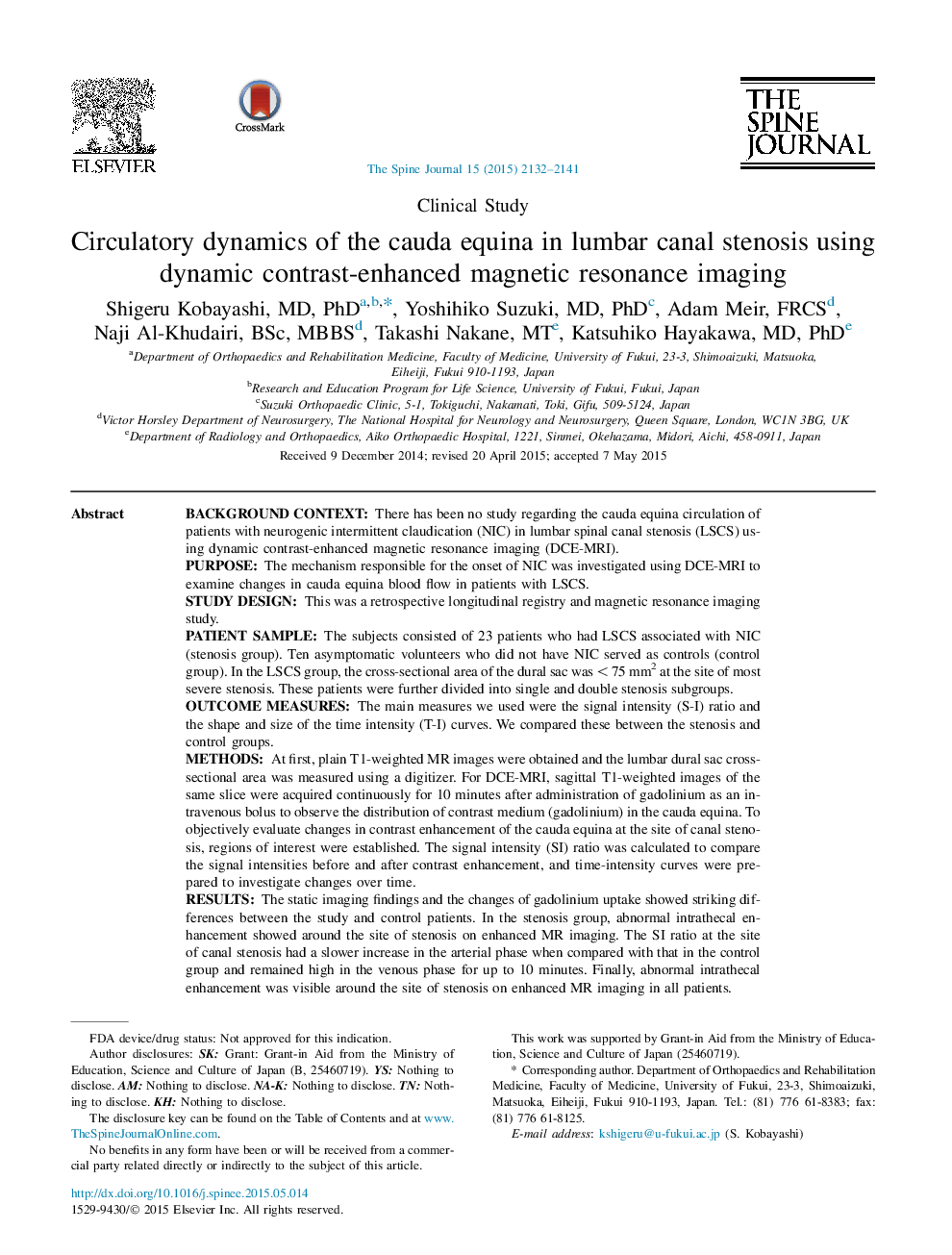| کد مقاله | کد نشریه | سال انتشار | مقاله انگلیسی | نسخه تمام متن |
|---|---|---|---|---|
| 6212091 | 1268566 | 2015 | 10 صفحه PDF | دانلود رایگان |

Background contextThere has been no study regarding the cauda equina circulation of patients with neurogenic intermittent claudication (NIC) in lumbar spinal canal stenosis (LSCS) using dynamic contrast-enhanced magnetic resonance imaging (DCE-MRI).PurposeThe mechanism responsible for the onset of NIC was investigated using DCE-MRI to examine changes in cauda equina blood flow in patients with LSCS.Study designThis was a retrospective longitudinal registry and magnetic resonance imaging study.Patient sampleThe subjects consisted of 23 patients who had LSCS associated with NIC (stenosis group). Ten asymptomatic volunteers who did not have NIC served as controls (control group). In the LSCS group, the cross-sectional area of the dural sac was < 75 mm2 at the site of most severe stenosis. These patients were further divided into single and double stenosis subgroups.Outcome measuresThe main measures we used were the signal intensity (S-I) ratio and the shape and size of the time intensity (T-I) curves. We compared these between the stenosis and control groups.MethodsAt first, plain T1-weighted MR images were obtained and the lumbar dural sac cross-sectional area was measured using a digitizer. For DCE-MRI, sagittal T1-weighted images of the same slice were acquired continuously for 10 minutes after administration of gadolinium as an intravenous bolus to observe the distribution of contrast medium (gadolinium) in the cauda equina. To objectively evaluate changes in contrast enhancement of the cauda equina at the site of canal stenosis, regions of interest were established. The signal intensity (SI) ratio was calculated to compare the signal intensities before and after contrast enhancement, and time-intensity curves were prepared to investigate changes over time.ResultsThe static imaging findings and the changes of gadolinium uptake showed striking differences between the study and control patients. In the stenosis group, abnormal intrathecal enhancement showed around the site of stenosis on enhanced MR imaging. The SI ratio at the site of canal stenosis had a slower increase in the arterial phase when compared with that in the control group and remained high in the venous phase for up to 10 minutes. Finally, abnormal intrathecal enhancement was visible around the site of stenosis on enhanced MR imaging in all patients.ConclusionsThese clinical data indicate that cauda equina nerve roots in the LSCS patients are pathologic even when symptoms are not elicited in the supine position, suggesting that intraradicular venous congestion and edema themselves do not influence the existence of radicular symptoms.
Journal: The Spine Journal - Volume 15, Issue 10, 1 October 2015, Pages 2132-2141